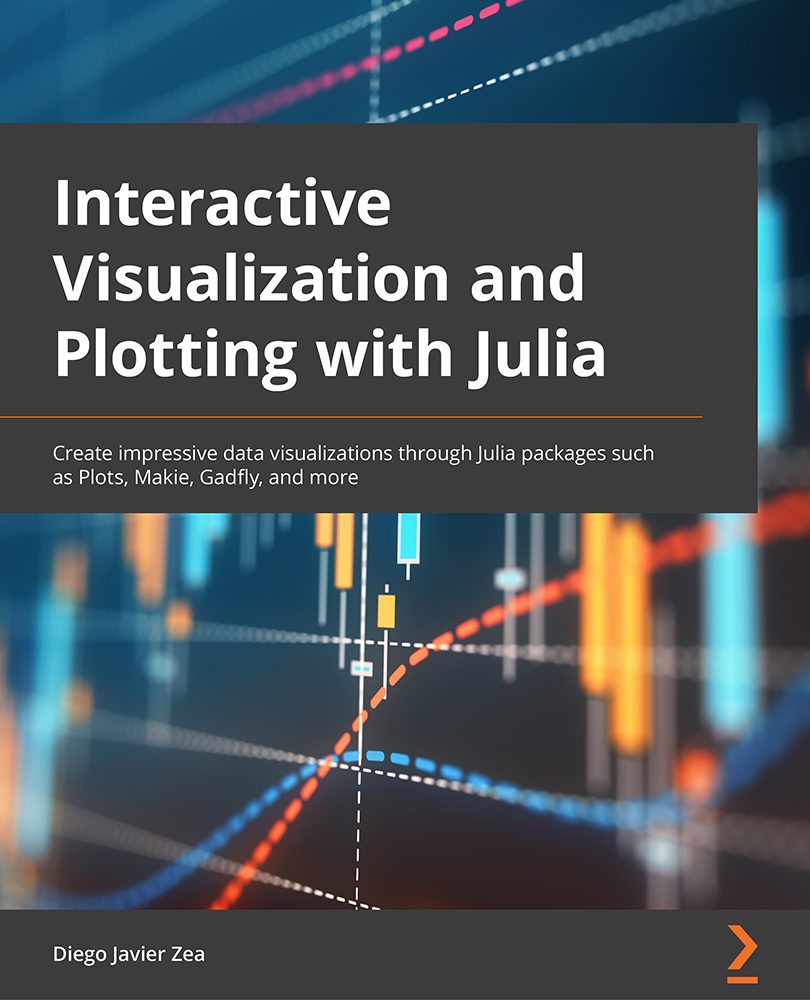Diego Javier Zea is the author of Interactive Visualization and Plotting with Julia, we got the chance to sit down with him and find out more about his experience of writing with Packt.
Q: What is/are your specialist tech area(s)?
Diego: As a bioinformatician, I analyse biological data and develop software and web servers for life sciences. I mainly use Julia, Python, and R — the Jupyter triad — for those tasks. I have been developing Julia since 2013. I have a strong knowledge of the Julia language and its biology, data analysis, and visualization ecosystems.
Q: How did you become an author for Packt? Tell us about your journey. What was your motivation for writing this book?
Diego: I was willing to write a book about the Julia language for some time. So, when I received the offer from Packt to write one, it suited me like a glove.
Q: What kind of research did you do, and how long did you spend researching before beginning the book?
Diego: I have been working and developing around the book topics since my PhD. — which gave me a strong background. However, before starting to write each chapter, I spend some days researching the topic, testing libraries, and designing the examples.
Q: Did you face any challenges during the writing process? How did you overcome them?
Diego: It was challenging to write the book and keep a work-write-life balance. Thankfully, my family — especially Elin Teppa — has greatly helped me to advance during the writing process. Also, Manikandan and Aparna from Packt have been understanding and flexible, helping me a lot through the process.
Q: What’s your take on the technologies discussed in the book? Where do you see these technologies heading in the future?
D: The Julia language and its ecosystem are rapidly growing as it is gaining popularity. Its plotting ecosystem is already broad and offers a fresh approach to plotting and data visualization. Some of their packages, such as Plots, have matured well, reaching high popularity. Others, such as Makie, are already powerful while still in active development. Thanks to their focus on interactivity and reproducibility, Pluto is another Julia tool with a promising future.
Q. Why should readers choose this book over others already on the market? How would you differentiate your book from its competition?
D: Most practical books on plotting and data visualization are written for Python or R. This book instead introduces the visualization ecosystem of the Julia language. Moreover, this book covers the tools needed for creating interactive plots and animations within the language.
Q. What are the key takeaways you want readers to come away from the book with?
D: I want to show readers the power of the Julia language and its plotting ecosystem. After reading this book, they would not only see the strength and flexibility of its packages but also profit from their use.
Q. What advice would you give to readers learning tech? Do you have any top tips?
D: Be patient with the language, and its package ecosystem as the language and the community grow. If, at some point, this book and the package documentation are not enough, do not be afraid to ask questions in the Julia channels — the Julia community is friendly and helpful.
Q. Do you have a blog that readers can follow?
D: Not at the moment, but I was thinking of starting one after publishing this book to keep up writing 🙂 So, feel free to visit my personal GitHub page in the future at https://diegozea.github.io/.
Q. Can you share any blogs, websites, and forums to help readers gain a holistic view of the tech they are learning?
D: The Plots and Makie documentation are continually improving and always a must. If you want to see Makie’s power in action, the site Beautiful Makie (https://lazarusa.github.io/BeautifulMakie/) will interest you. If you have any questions, I recommend the Julia language Discourse (https://discourse.julialang.org/).
Q. How would you describe your author journey with Packt? Would you recommend Packt to aspiring authors?
D: It was a great experience writing a book with Packt! I have learned and grown a lot while writing this book, especially from the constructive editors’ comments. The initial course offered by Packt was also helpful. Also, things are not always easy, but Packt staff has been consistently friendly and helpful.
Q. Do you belong to any tech community groups?
D: I am part of the Julia community, particularly in biology and plotting. I am also part of the bioinformatics community.
Q. What are your favorite tech journals? How do you keep yourself up to date on tech?
D: I have found Twitter very helpful to be updated, both with Julia and bioinformatics. The Julia Discourse is also beneficial for keeping up to date with the latest news around the language.
Q. How did you organize, plan, and prioritize your work and write the book?
D: That has not been easy, especially working in science — where everybody struggles to keep a work-life balance. To be productive, I have used timeboxing to assign and ensure focus work time for writing the book.
Q. What is the one writing tip that you found most crucial and would like to share with aspiring authors?
D: To me, researching and planning the chapter examples before starting writing worked very well.
You can find Diego’s book on Amazon by following this link: Please click here









